This is a preprint.
CDK12 Loss Promotes Prostate Cancer Development While Exposing Vulnerabilities to Paralog-Based Synthetic Lethality
- PMID: 38562774
- PMCID: PMC10983964
- DOI: 10.1101/2024.03.20.585990
CDK12 Loss Promotes Prostate Cancer Development While Exposing Vulnerabilities to Paralog-Based Synthetic Lethality
Update in
-
CDK12 loss drives prostate cancer progression, transcription-replication conflicts, and synthetic lethality with paralog CDK13.Cell Rep Med. 2024 Oct 15;5(10):101758. doi: 10.1016/j.xcrm.2024.101758. Epub 2024 Oct 4. Cell Rep Med. 2024. PMID: 39368479 Free PMC article.
Abstract
Biallelic loss of cyclin-dependent kinase 12 (CDK12) defines a unique molecular subtype of metastatic castration-resistant prostate cancer (mCRPC). It remains unclear, however, whether CDK12 loss per se is sufficient to drive prostate cancer development-either alone, or in the context of other genetic alterations-and whether CDK12-mutant tumors exhibit sensitivity to specific pharmacotherapies. Here, we demonstrate that tissue-specific Cdk12 ablation is sufficient to induce preneoplastic lesions and robust T cell infiltration in the mouse prostate. Allograft-based CRISPR screening demonstrated that Cdk12 loss is positively associated with Trp53 inactivation but negatively associated with Pten inactivation-akin to what is observed in human mCRPC. Consistent with this, ablation of Cdk12 in prostate organoids with concurrent Trp53 loss promotes their proliferation and ability to form tumors in mice, while Cdk12 knockout in the Pten-null prostate cancer mouse model abrogates tumor growth. Bigenic Cdk12 and Trp53 loss allografts represent a new syngeneic model for the study of androgen receptor (AR)-positive, luminal prostate cancer. Notably, Cdk12/Trp53 loss prostate tumors are sensitive to immune checkpoint blockade. Cdk12-null organoids (either with or without Trp53 co-ablation) and patient-derived xenografts from tumors with CDK12 inactivation are highly sensitive to inhibition or degradation of its paralog kinase, CDK13. Together, these data identify CDK12 as a bona fide tumor suppressor gene with impact on tumor progression and lends support to paralog-based synthetic lethality as a promising strategy for treating CDK12-mutant mCRPC.
Keywords: CDK12; CDK13; PTEN; immunotherapy; p53; paralog-based synthetic lethality; prostate cancer; syngeneic model.
Conflict of interest statement
DECLARATION OF INTERESTS A.M.C. is a co-founder and serves on the scientific advisory board of the following: LynxDx, Flamingo Therapeutics, Medsyn Pharma, Oncopia Therapeutics, and Esanik Therapeutics. A.M.C. serves as an advisor to Aurigene Oncology Limited, Proteovant, Tempus, RAPPTA, and Ascentage. C.J.L. makes the following disclosures: receives and/or has received research funding from: AstraZeneca, Merck KGaA, Artios, Neophore. Received consultancy, SAB membership, or honoraria payments from: FoRx, Syncona, Sun Pharma, Gerson Lehrman Group, Merck KGaA, Vertex, AstraZeneca, Tango, 3rd Rock, Ono Pharma, Artios, Abingworth, Tesselate, Dark Blue Therapeutics, Pontifax, Astex, Neophore, Glaxo Smith Kline, Dawn Bioventures. Has stock in: Tango, Ovibio, Hysplex, Tesselate. C.J.L. is also a named inventor on patents describing the use of DNA repair inhibitors and stands to gain from their development and use as part of the ICR “Rewards to Inventors” scheme and also reports benefits from this scheme associated with patents for PARP inhibitors paid into C.J.L.’s personal account and research accounts at the Institute of Cancer Research. J.C. serves in an advisory role to ExaiBio, unrelated to this work. F.Y.F. is currently serving, has served on the advisory boards, or has received consulting fees from Astellas, Bayer, Celgene, Clovis Oncology, Janssen, Genentech Roche, Myovant, Roivant, Sanofi, and Blue Earth Diagnostics; he also is a member of the SAB for Artera, ClearNote Genomics, SerImmune, and BMS (Microenvironment Division). K.D. serves as a scientific advisor of Kinoteck Therapeutics CO., LTD, Shanghai and has received financial support from Livzon Pharmaceutical Group, Zhuhai, China. The University of Michigan and the Shanghai Institute of Organic Chemistry have filed patents on the CDK12/13 degraders and inhibitors mentioned in this manuscript. A.M.C, K.D., Xiaoju W., J.Y., Y.Chang, and J.C.T. have been named as co-inventors on these patents.
Figures
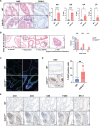
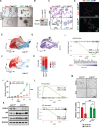
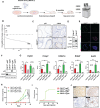
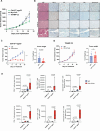

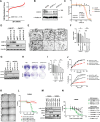
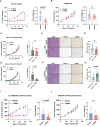
References
-
- Chou J., Quigley D.A., Robinson T.M., Feng F.Y., and Ashworth A. (2020). Transcription-Associated Cyclin-Dependent Kinases as Targets and Biomarkers for Cancer Therapy. Cancer Discov 10, 351–370. 10.1158/2159-8290.CD-19-0528. - DOI - PubMed
-
- Zhang T., Kwiatkowski N., Olson C.M., Dixon-Clarke S.E., Abraham B.J., Greifenberg A.K., Ficarro S.B., Elkins J.M., Liang Y., Hannett N.M., et al. (2016). Covalent targeting of remote cysteine residues to develop CDK12 and CDK13 inhibitors. Nat Chem Biol 12, 876–884. 10.1038/nchembio.2166. - DOI - PMC - PubMed
-
- Blazek D., Kohoutek J., Bartholomeeusen K., Johansen E., Hulinkova P., Luo Z., Cimermancic P., Ule J., and Peterlin B.M. (2011). The Cyclin K/Cdk12 complex maintains genomic stability via regulation of expression of DNA damage response genes. Genes Dev 25, 2158–2172. 10.1101/gad.16962311. - DOI - PMC - PubMed
-
- Cheng S.W., Kuzyk M.A., Moradian A., Ichu T.A., Chang V.C., Tien J.F., Vollett S.E., Griffith M., Marra M.A., and Morin G.B. (2012). Interaction of cyclin-dependent kinase 12/CrkRS with cyclin K1 is required for the phosphorylation of the C-terminal domain of RNA polymerase II. Mol Cell Biol 32, 4691–4704. 10.1128/MCB.06267-11. - DOI - PMC - PubMed
Publication types
Grants and funding
LinkOut - more resources
Full Text Sources
Molecular Biology Databases
Research Materials
Miscellaneous
